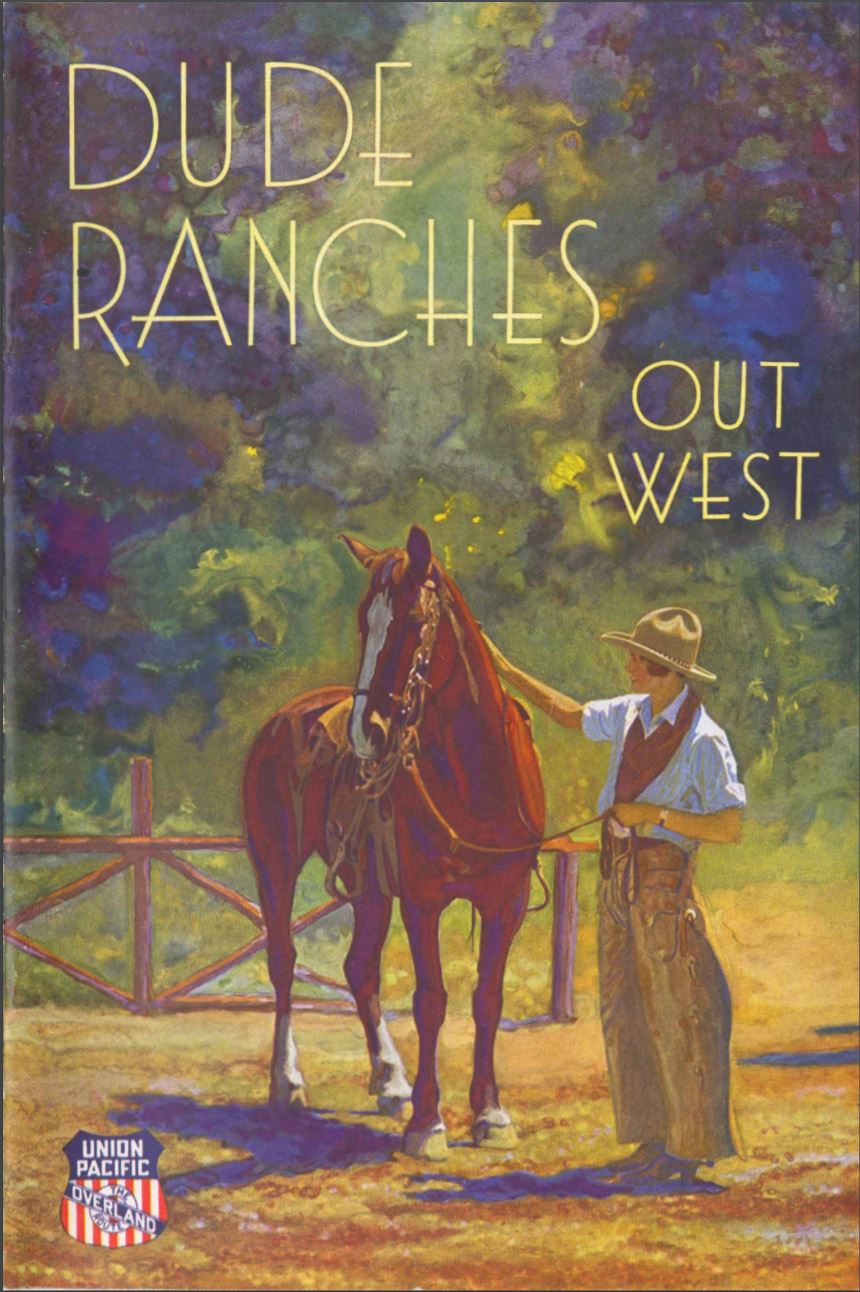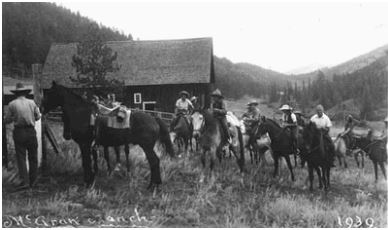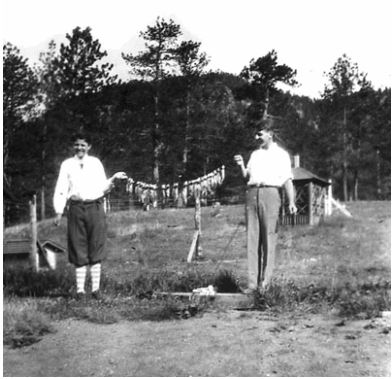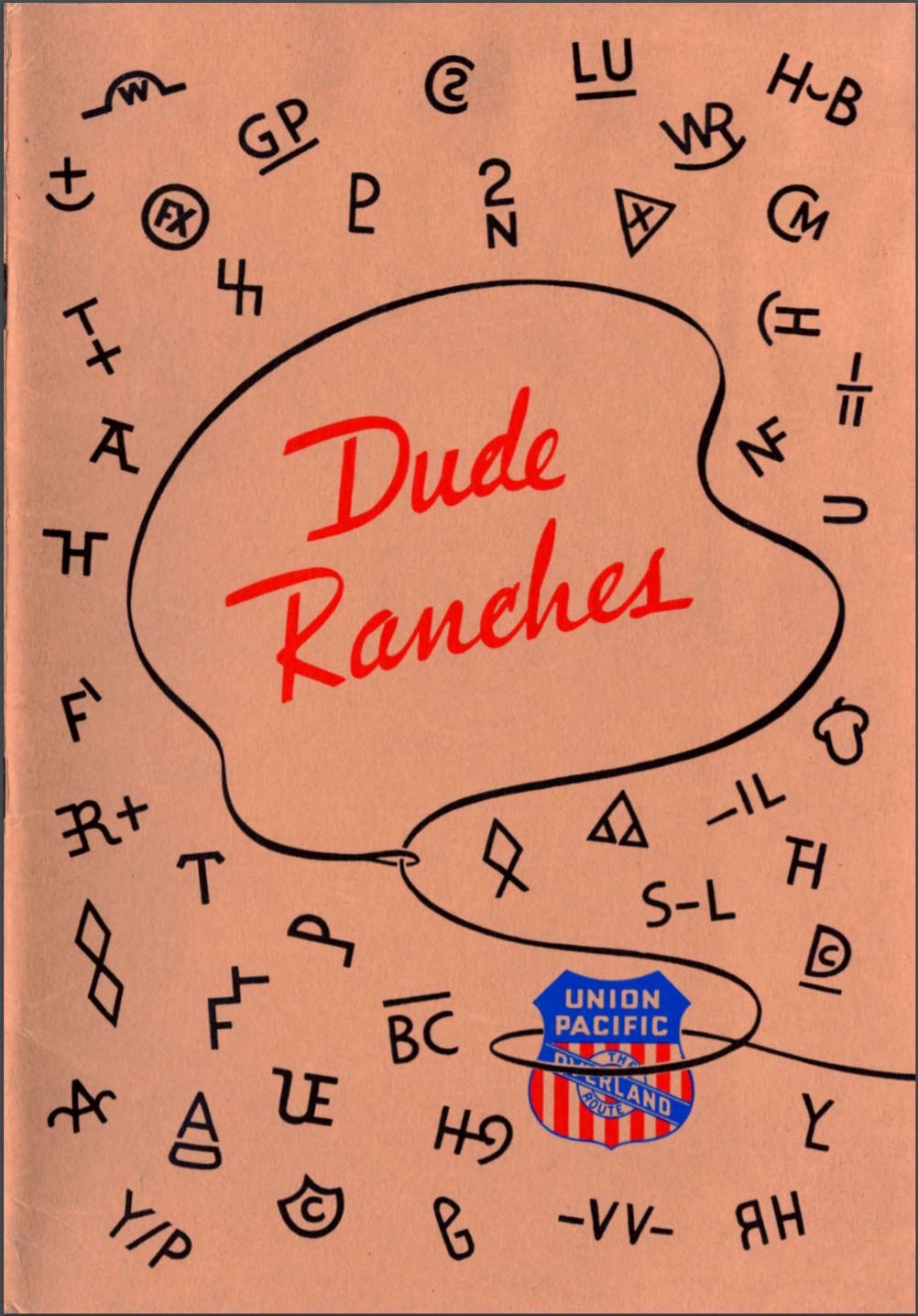
Story
Race and Ranching at Rocky Mountain National Park
One cold blue August morning, I opened the door of my tiny cabin at the Continental Divide Research Learning Center’s McGraw Ranch in Rocky Mountain National Park. I listened to the burbling of Cow Creek and gazed to the mountains, drenched in gold from the rising sun. The value of McGraw Ranch, however, is more than scenic. Its enduring physical presence tells histories that interweave the environment, race, and leisure in Colorado.
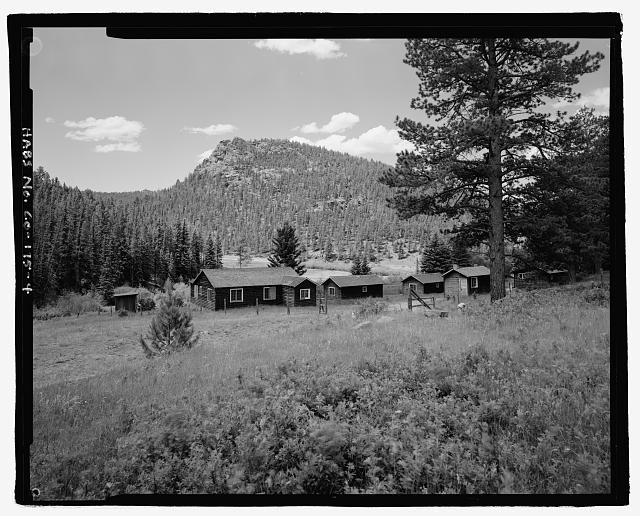
The only intact guest ranch within Rocky Mountain National Park, McGraw Ranch gave tourists a classic western dude-ranch experience. Photo by Roger Whitacre
At Rocky Mountain National Park’s historic dude ranches, western promoters (especially those of the railroads), dude ranchers, and visitors claimed Colorado’s mountains as white racial space, and reserved western tourism and the enjoyment of western landscapes as the cultural and physical domain of whites.
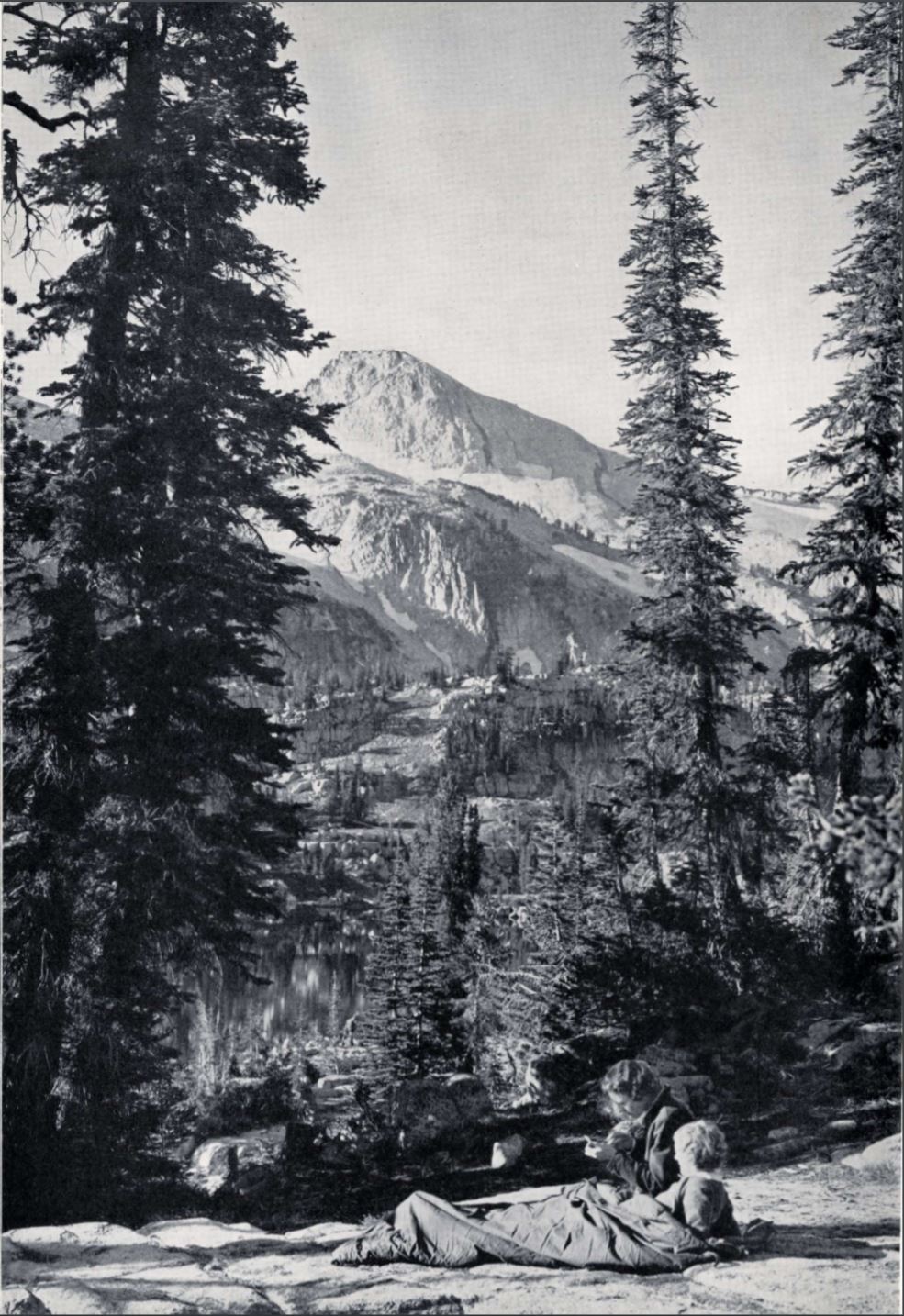
"'Rolling out' is a pleasure in the Colorado Rockies," according to the 1937 issue of Union Pacific's Dude Ranches Out West
Well before McGraw Ranch started opening its doors to guests, nineteenth-century American elites, most notably Theodore Roosevelt, had reached a definitive consensus on the value of spending time (and money) to experience the American West’s mountain landscapes. The perceived purpose of western travel morphed subtly between the Civil War and World War II, and western tourism extended down the social scale. Engaging with nature (preferably in as wild a state as possible) had become a tonic for white Americans’ anxieties about the impending loss of racial vigor—the perceived result of less strenuous forms of work, increasing racial diversity, and comparatively leisured urban lifestyles. By the 1930s and 1940s, rising wages, more vacation time, and improved travel infrastructure made recreating in the West’s national parks accessible to working class vacationers, although they mainly stayed in campgrounds, rather than ranches or lodges. As the Union Pacific Railroad suggested, a stay at a Colorado guest ranch (and the use of Union Pacific’s convenient rail service to get there) was the solution for weary urbanites seeking invigorating vacations for themselves and their children.
Guest ranches had been an important part of the national parks’ tourism infrastructure since the early twentieth century, offering visitors lodging, food, and recreation alongside a hefty dose of western culture—and like others, the McGraw Ranch became a desirable destination within Rocky Mountain National Park. Widowed in 1918, Irene McGraw, the McGraw family matriarch, ran the ranch while raising three sons and a daughter. She was also deeply involved in Estes Park’s community and intellectual life, frequently hosting card games, dinners, music clubs, salons, and supporting local charitable efforts. Falling agricultural prices in the 1920s meant that the family pursued several means of producing income from the land, including selling dairy, meat, and lumber.
In 1936, McGraw Ranch began catering to tourists, starting with Republican candidate for the US presidency, Alf Landon, who, along with his family, made the ranch his summer campaign headquarters. The McGraws’ transition into guest ranching was organic, as the family had always had a busy social life. Irene McGraw continued to operate the property as a working cattle ranch while taking in guests. Staying at the McGraw ranch offered visitors “ . . . a vacation you will never forget” complete with rugged recreation like big game hunting, pack trips, riding, and fishing alongside modern comforts, advertising “dinner parties,” “excellent food,” and “good beds” in a climate “air-conditioned by nature.”
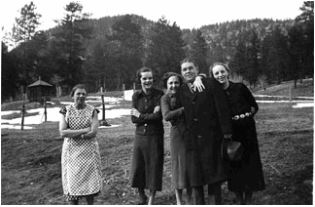
This circa-1930s scene at McGraw Ranch appears in the National Park Service's Cultural Landscape Inventory for the ranch, prepared in 2002
Irene McGraw’s son, Frank, worked to promote Colorado’s guest ranches at the state and national levels. In 1941, the Colorado Dude and Guest Ranch Association elected Frank as one of its directors, and he was a key organizer of the Estes Park Rodeo, helping to restart the local tourist attraction in 1946 after a several-years-long hiatus during World War II. The McGraws thoroughly understood the appeal of their land and lifestyle to tourists and recognized tourism’s role in sustaining the ranch’s other lines of business.
The value of the guest ranch experience was rooted in an understanding of ranches and the lands they occupied as white racial space. Community events within Estes Park invoked the white supremacy typical of the 1930s and 1940s, staging racist entertainment for the amusement of white audiences. The Estes Park Trail covered the presentation of “Dixie Blackbirds,” in 1936. Held to benefit the local volunteer fire department, the Trail promised “a rollicking, frolicking minstrel show” made up of “the leading men of the community, in black face, cavorting around like high school youngsters, making themselves . . . as ridiculous as possible.” John McGraw, Frank’s younger brother, was among the men to appear in blackface. Guides to western guest ranches also used the presence of Black staff as a marker of a ranch’s refined service, informing prospective “dudes” that “Some [ranches] have dining pavilions and white-coated colored waiters,” while at less formal ranches, white ranchers and guests dined together as equals. The space between white leisure and Black labor was what defined western luxury.
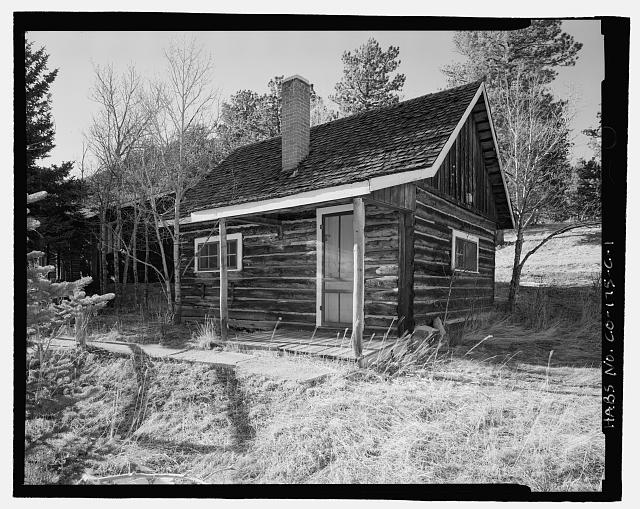
An original homestead-era structure, the Prospector Cabin was believed to be the oldest building on McGraw Ranch. Photo by Roger Whitacre
The types of guests permitted to stay at guest ranches was also up to ranchers’ personal discretion. While few ranches in the West advertised themselves as such, overt racial segregation was common practice on dude ranches in the East. “Restricted” ranches were closed not only to Black Americans, but also to Jews. The Union Pacific’s guide Dude Ranches Out West obliquely referenced this aspect of the “host-guest relationship,” stating: “Most ranches ask for references and investigate them carefully . . . if not congenial or sociable with other guests they [the undesirable guests] would not enjoy their own vacation, nor would the others.” On western ranches, ranchers “tended to avoid public scrutiny” about their operations as a general rule, but it is likely that they informally practiced some degree of racial and ethnic discrimination.
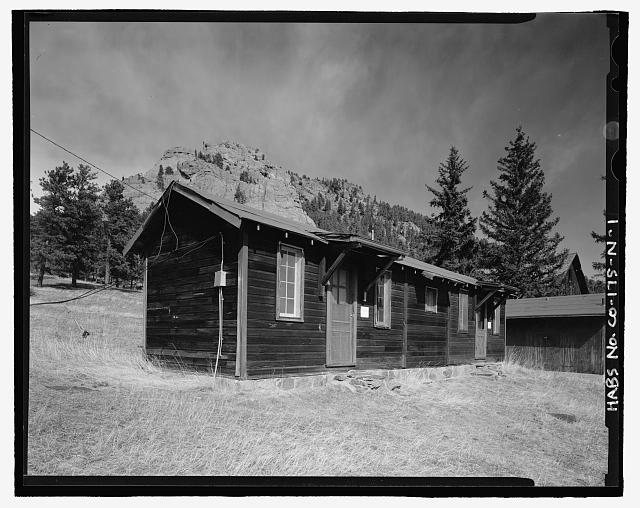
This Female Worker's Residence was moved from a nearby camp in 1958 to provide summer housing for women at the ranch. Photo by Roger Whitacre
Throughout the twentieth century, Rocky Mountain National Park acquired several guest ranches within its borders, including Irwin Beattie’s Phantom Valley Ranch, the Holzwarths’ Never Summer Ranch, Green Mountain, Onahu, and Sprague’s/Stead’s Ranch, among others. With few exceptions, the Park Service razed former ranch buildings and structures to return the land to a more natural-looking state; the ideals of Mission 66 guided these efforts. Mission 66 was a federal program that sought to address the environmental impact of increasing park visitation and funding shortages following World War II. Along with facilities and infrastructure upgrades, Mission 66 also made funding available for the national park to purchase and rehabilitate more privately-held inholdings. In 1966, the Park Service bought 484 acres of the McGraw Ranch, and the family opted to cease its operations as a working ranch. Frank McGraw and his wife, Ruth, sold the property in 1973, but continued running the ranch until they retired in 1979. The national park acquired the remainder of the acreage in 1988, and McGraw Ranch narrowly escaped destruction in the early 1990s. When the park threatened to tear it down, Estes Park locals, backed by the National Trust for Historic Preservation, advocated for the ranch’s preservation. The National Park Service reconsidered, and McGraw Ranch became a research facility that houses researchers whose work enhances the park’s knowledge and stewardship of its resources.
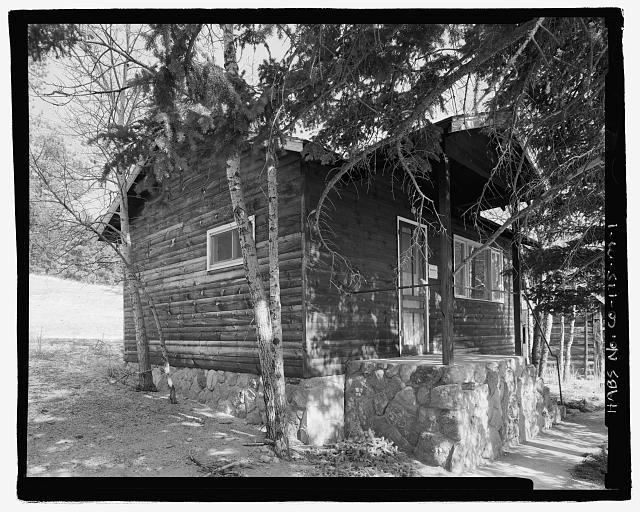
The Rustler's Roost Cabin was built in 1959 to accommodate additional guests. Photo by Roger Whitacre
Today, interpretation at McGraw Ranch recounts a moment when the Park Service changed its mind about the stories it wanted to tell at Rocky Mountain National Park. By preserving the ranch, the park’s decision to tell the story of the McGraw family and dude ranching in the park complicated its older, simpler narrative of the park as an untouched wilderness. Rather than demolishing the ranch, the Park Service chose to acknowledge the different ways that people existed on and used the land that became the national park. The ranch is also a place that tells a tale of race and the ways it intersects with Colorado’s mountain landscapes, although this has yet to be widely acknowledged as a part of the ranch’s story. In 2020, Coloradans and Americans, in general, are contemplating racism with the desire to better understand and confront it. Revealing a history of race in unexpected places like McGraw Ranch is a reminder that race and racism shaped every facet of American life—especially in the West.
For Further Reading
Aaron, Cindy S. Working at Play: A History of Vacations in the United States. New York: Oxford University Press, 1999.
Advertisement. “Carefree Colorado Calls You!” Estes Park Trail, vol. 26, no. 1, August 26, 1946.
Andrews, Thomas G. Coyote Valley: Deep History in the High Rockies. Cambridge, Mass.: Harvard University Press, 2015. 193-195, 197, 201.
Borne, Lawrence R. A Complete History of Dude Ranches. Albuquerque: University of New Mexico Press, 1983.
Dude Ranches Out West. Union Pacific Railroad, 1933 and 1937.
“History of Estes Park Rodeo One of Unselfish Devotion,” Estes Park Trail, vol. 18, no. 10, June 25, 1948.
Lears, Jackson, T.J. Rebirth of a Nation: The Making of Modern America, 1877-1920. New York: HarperCollins Publishers, 2009.
“McGraw Elected to Office in Dude Ranch Association,” Estes Park Trail, vol. 21, no. 31, November 21, 1941.
The McGraw Ranch Research Centre at Rocky Mountain National Park. The National Trust for Historic Preservation. Denver: The National Trust for Historic Preservation, Mountain/Plains Office, 1999
“Minstrel Show to be Given Tomorrow Night,” Estes Park Trail, vol. 15, no. 19, August 23, 1935.
“Mountainside Lodge is the Scene of Many Parties,” Estes Park Trail, vol. 7, no. 17, August 5, 1927.
“Music Club Meets with Mrs. McGraw” Estes Park Trail, vol. 1, no. 46, February 24, 1922.
National Register of Historic Places Form – McGraw Ranch, U.S. Department of the Interior. https://s3.amazonaws.com/NARAprodstorage/lz/electronic-records/rg-079/NPS_CO/98001163.pdf
Philpott, William. Vacationland: Tourism and the Colorado High Country. Seattle: University of Washington, 2013.
Rico, Monica. Nature’s Noblemen: Transatlantic Masculinities and the Nineteenth-Century American West. New Haven, Conn.: Yale University Press, 2013.
Rodnitzky, Jerome L. “Recapturing the West: The Dude Ranch in American Life,” Journal of the Southwest, (Summer 1968) vol. 10, no. 2: 121.

